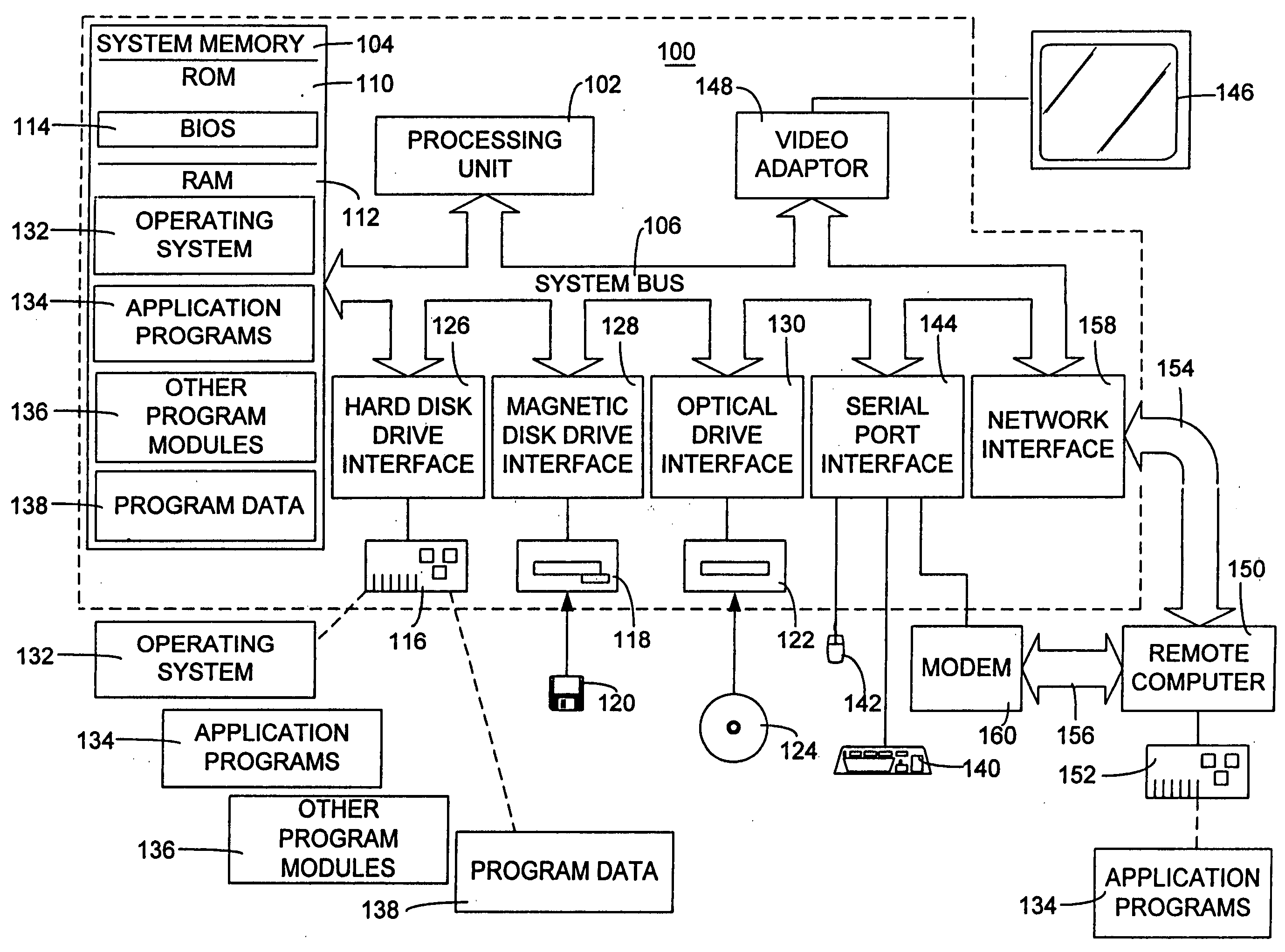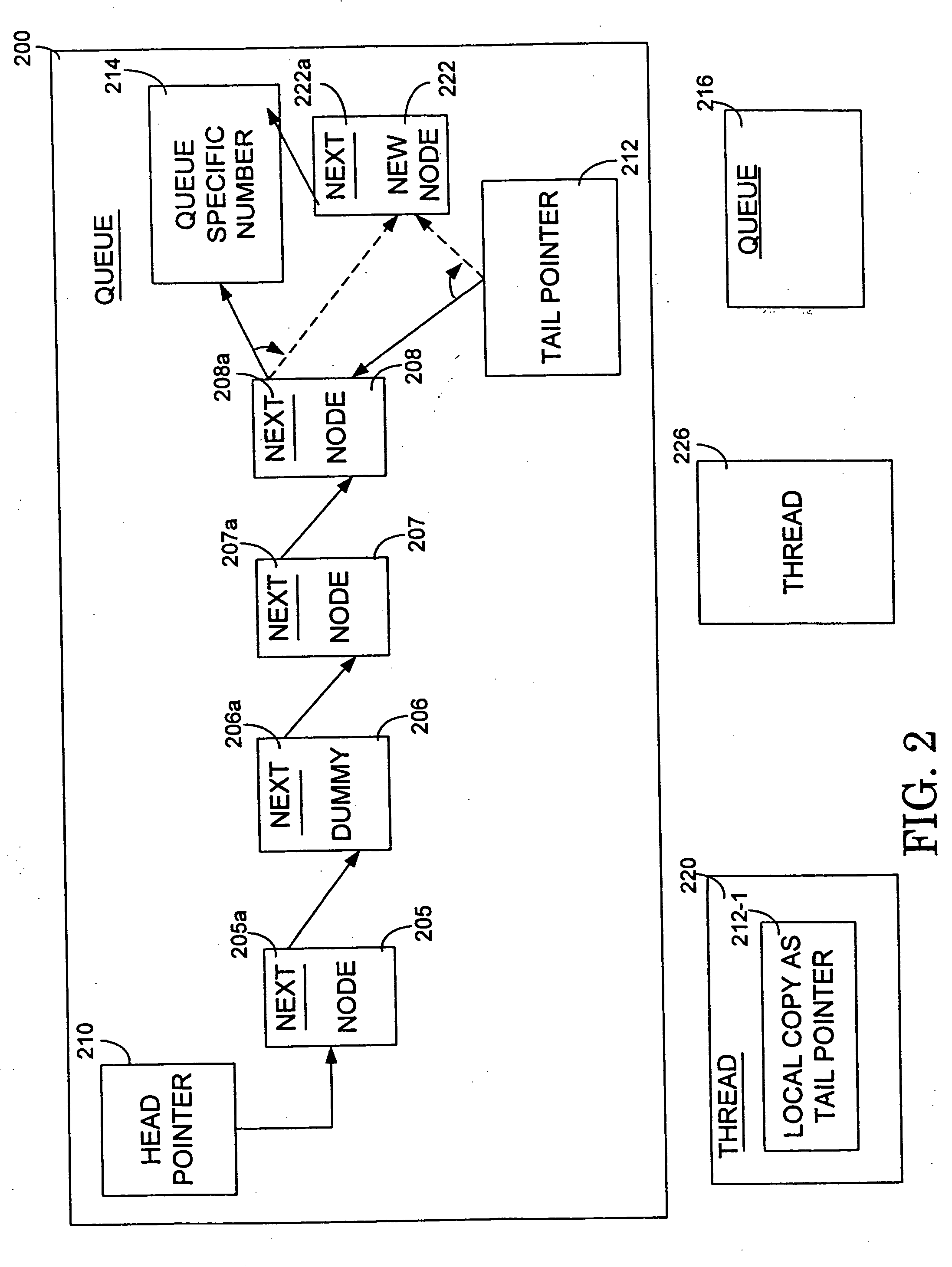Non-blocking concurrent queues with direct node access by threads
a concurrent queue and node access technology, applied in the direction of instruments, program control, computation using denominational number representation, etc., can solve the problem of a number of different threads unknowingly enqueuing a new node on the wrong queue or other location, blocking queues are susceptible to large unpredictable delays in process execution, and difficult problems to maintain the integrity of the queue while allowing concurrent use by a number of different threads
- Summary
- Abstract
- Description
- Claims
- Application Information
AI Technical Summary
Benefits of technology
Problems solved by technology
Method used
Image
Examples
Embodiment Construction
[0033] Exemplary Operating Environment
[0034]FIG. 1 and the following discussion are intended to provide a brief, general description of a suitable computing environment in which the invention may be implemented. Although not required, the invention will be described in the general context of computer-executable instructions, such as program modules, being executed by a personal computer. Generally, program modules include processes, programs, objects, components, data structures, etc. that perform particular tasks or implement particular abstract data types. Moreover, those skilled in the art will appreciate that the invention may be practiced with other computer system configurations, including inside various programmable peripheral interface cards such as 126, 128, 130, 144, 158, 148 in FIG. 1, inside programmable peripherals such as disks, game controllers and accessories, speakers, modems, printers and the like, in hand-held devices, multiprocessor systems, microprocessor-based...
PUM
 Login to View More
Login to View More Abstract
Description
Claims
Application Information
 Login to View More
Login to View More - R&D
- Intellectual Property
- Life Sciences
- Materials
- Tech Scout
- Unparalleled Data Quality
- Higher Quality Content
- 60% Fewer Hallucinations
Browse by: Latest US Patents, China's latest patents, Technical Efficacy Thesaurus, Application Domain, Technology Topic, Popular Technical Reports.
© 2025 PatSnap. All rights reserved.Legal|Privacy policy|Modern Slavery Act Transparency Statement|Sitemap|About US| Contact US: help@patsnap.com



